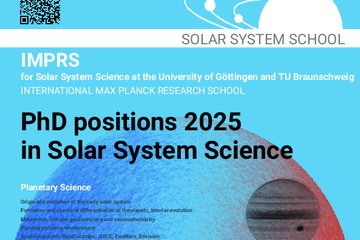All genres
21.
Journal Article
Seismic constraints on interior solar convection. Astrophysical Journal 712, pp. L98 - L102 (2010)
22.
Journal Article
An absorbing boundary formulation for the stratified, linearized, ideal MHD equations based on an unsplit, convolutional perfectly matched layer. Astronomy and Astrophysics 522, A87 (2010)
23.
Journal Article
Modeling the subsurface structure of sunspots. Solar Physics 267, pp. 1 - 62 (2010)
24.
Journal Article
Noise cross-correlation sensitivity kernels. Geophysical Journal International 183, pp. 791 - 819 (2010)
25.
Journal Article
A wave scattering theory of solar seismic power halos. Astronomy and Astrophysics 503, pp. 595 - 599 (2009)
26.
Journal Article
A wave scattering theory of solar seismic power haloes. Astronomy and Astrophysics 503 (2), pp. 595 - 599 (2009)
27.
Journal Article
Multiple scattering of waves by a pair of gravitationally stratified flux tubes. Astrophysical Journal 697, pp. 651 - 659 (2009)
28.
Journal Article
Multiple Scattering of Waves by a Pair of Gravitationally Stratified Flux Tubes. The Astrophysical Journal 697, 651 (2009)
29.
Journal Article
Subwavelength resolution imaging of the solar deep interior. Astrophysical Journal 693, pp. 1678 - 1685 (2009)
30.
Book Chapter
Ist die Konvektion im Sonneninneren langsamer als gedacht? In: Jahrbuch 2013, n/a. Max-Planck-Gesellschaft, München (2013)
31.
Conference Paper
Deep-focus diagnostics of sunspot structure. In: Magnetic Coupling between the Interior and Atmosphere of the Sun, pp. 378 - 385 (Eds. Hasan, S. S.; Rutten, R. J.). (2010)
32.
Talk
Simulating acoustic waves in spotted stars. Stellar and Planetary Dynamos, Göttingen, Germany (2015)
33.
Report
SPARC: Seismic Propagation through Active Regions and Convection. Astrophysics Source Code Library (2011)











